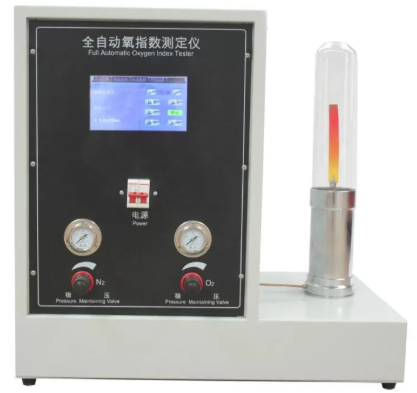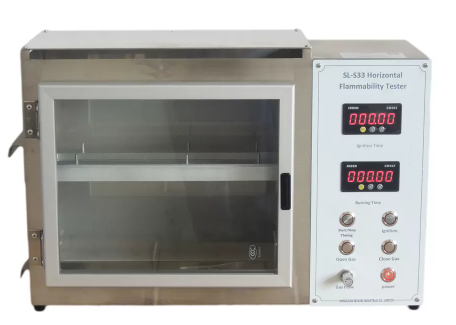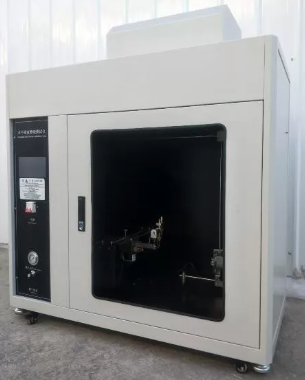 Toys Testing Equipment
Toys Testing Equipment Footwear Testing Equipment
Footwear Testing Equipment Tensile Testing Machine
Tensile Testing Machine Environmental Test Chamber
Environmental Test Chamber Building Material Flammability Test Equipment
Building Material Flammability Test Equipment Paper Testing Equipment
Paper Testing Equipment Spectacle Frames Testing Equipment
Spectacle Frames Testing Equipment Oil Analysis Testing Equipment
Oil Analysis Testing Equipment Lab Test Equipment
Lab Test Equipment Electronic Testing Equipment
Electronic Testing Equipment Stationery Testing Equipment
Stationery Testing Equipment Flammability Test Equipment
Flammability Test Equipment Furniture Testing Machine
Furniture Testing Machine Textile Testing Equipment
Textile Testing Equipment
 Indonesia's Government visit our factory and make cooperation
Indonesia's Government visit our factory and make cooperation- 2025/8/20
- Exciting News from SKYLINE INSTRUMENT! We’re thrilled to announce the successful visit of our esteemed client from Indonesia’s Government Textile & Leather Testing Lab project! After a detailed f...
 Warmly welcome the visit of Indian customers and the inspection of the equipment.
Warmly welcome the visit of Indian customers and the inspection of the equipment.- 2025/8/15
- Indian Laboratory Delegation Visits SKYLINE Factory, Signs Landmark Partnership After Successful Inspection Dongguan,August – SKYLINE recently welcomed a delegation of esteemed clients from India...
 What are the standards for the fire resistance rating test of building materials?
What are the standards for the fire resistance rating test of building materials?- 2025/6/27
- In recent years, various countries have successively raised regulations on the flame retardancy of materials, putting forward higher requirements for the flame retardancy of polymer materials and bu...
- More>
What are the standards for the fire resistance rating test of building materials?
In recent years, various countries have successively raised regulations on the flame retardancy of materials,
putting forward higher requirements for the flame retardancy of polymer materials and building materials.
What are the combustion grade test standards for fire protection testing?
I. Oxygen Index Test

Concept: Under specified conditions, the minimum oxygen concentration required for a material to undergo
flaming combustion in an oxygen-nitrogen mixed gas flow, which is usually expressed as a volume percentage of oxygen.
A high oxygen index indicates that the material is not easy to burn, while a low oxygen index indicates that the material is easy to burn.
Ii.Horizontal Flammability Test

1. Concept: It can be used for horizontal burning of plastic plates, rubber plates, foamed materials, etc.
(Common horizontal burning levels: HB, HB40, HB75, HBF, HF-1, HF-2).
2. Common standards: UL94, ASTM D635, GB/T 2408 Method A, ASTM D4986, ISO9772.
Iii.Vertical Flammability Test

1. Concept: It can be used for vertical burning of plastic plates, rubber plates, foamed materials, film materials, etc.
(Common vertical burning levels: V-0, V-1, V-2, VTM-0, VTM-1, VTM-2, FV0, FV1, FV2, VV-1).
2. Common standards: UL94, GB/T 2408 Method B, ASTM D3801, GB/T 4609, ASTM D4804, ISO 9773, UL 1581, UL 2556.
IV. The hot wire burns Test

1. Concept: The specified electric heating wire is heated to the test temperature (550℃-960℃) with
a large current for 1 minute. Then, the test sample is vertically scalded at the specified pressure.
The fire hazard of the sample is determined by observing whether the sample and the substrate ignite or
the duration of the ignition. The ignition property, ignition temperature (GWIT), flammability and
flammability index (GWFI) of the solid combustible material are obtained.
2. Common standards: IEC 60695-2, GB/T 5169, GB 4943.
V. Building Materials Flammability Test

1. Concept: Generally, it is divided into floor covering materials and non-floor covering materials
(according to the combustion level, it can be classified as: non-combustible materials, flame-retardant materials,
combustible materials and flammable materials).
2. Common standards: GB 8624 and EN 13501-1.
The testing room for the fire resistance performance of materials is mandatory by governments of all countries.
At present, the standard systems for building fire protection in the world are divided into three major categories:
the European system, the American system and the Australian system.
The flame retardant requirements for building materials have specific regulations based on their different application sites.
For instance, in public places and high-rise buildings, the corresponding flame retardant requirements for building materials are relatively high.
Therefore, understanding and mastering the flame-retardant performance of building materials themselves is a technical information that
every manufacturer/distributor/consumer must possess. It can provide effective guidance for us when purchasing/using building materials.
Meanwhile, each country/region has its own mandatory standard methods for flame retardancy testing of buildings.
The combustion test of building materials is crucial for ensuring the fire safety of buildings.
Through testing, the combustion characteristics of materials under fire conditions can be evaluated, thereby selecting appropriate materials and
taking effective fire prevention measures. This can not only protect life safety, but also reduce property losses and comply with relevant laws and regulations.
- ·How important is home safety and what is the Flammability Tester for Building Materials do?
- ·Details of the inspection of a pair of qualified shoes.
- ·How to judge the quality of shoes from their appearance?
- ·What is hydrostatic resistance and what is a fabric hydrostatic tester used for?
- · What are the textile testing items mainly included?
- ·How to test toys' unreasonable dangerous?

 Toys Testing Equipment
Toys Testing Equipment Footwear Testing Equipment
Footwear Testing Equipment Tensile Testing Machine
Tensile Testing Machine Environmental Test Chamber
Environmental Test Chamber Building Material Flammability Test Equipment
Building Material Flammability Test Equipment Paper Testing Equipment
Paper Testing Equipment Spectacle Frames Testing Equipment
Spectacle Frames Testing Equipment Oil Analysis Testing Equipment
Oil Analysis Testing Equipment Lab Test Equipment
Lab Test Equipment Electronic Testing Equipment
Electronic Testing Equipment Stationery Testing Equipment
Stationery Testing Equipment Flammability Test Equipment
Flammability Test Equipment Furniture Testing Machine
Furniture Testing Machine Textile Testing Equipment
Textile Testing Equipment

 English
English 中文
中文 Español
Español française
française العربية
العربية Русский
Русский







